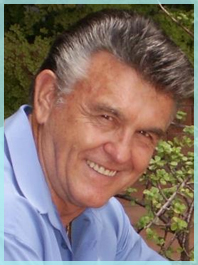|
|
|
|
|
Emmett Technique What is Emmett - The History Of Emmett - Who Can Benefit
New to the UK in 2007, this bodywork therapy is designed to offer fast relief from pain and discomfort. Beneficial effects are commonly noticed before the end of the first treatment. The therapist uses a combination of gentle switches and light pressure to release specific muscle groups, enabling the client's body to return to a balanced state. The treatment is usually performed over light clothing and generally takes between 30 and 50 minutes. Practitioners are trained in assessment skills and how to tailor treatments precisely to their clients' individual needs. They are also trained in assisting the client to recognise and enhance the changes achieved. All facets of this effective and complete treatment result in the successful outcome of the work, creating lasting changes for the client. The results can be almost instantaneous. Before leaving the clinic most clients notice dramatic changes in flexibility, balance, pain levels, ranges of movement, breathing and other functions depending upon the areas worked. The Emmett Technique can be used alone or alongside any other bodywork therapy to enhance its performance. For this reason, it is one of the most desirable and versatile treatments available, enhancing any therapist's practice. Click on the video below to see an interview with Ross Emmett, or visit his website www.rossemmett.com.au
The Emmett Technique originates from Australia its founder being Ross Emmett. Ross developed his technique as a youth working on animals while working at the Animal Research Institute in Tasmania. Later, after moving to Queensland, Australia, he combined these skills with older proven therapies such as massage, trigger and other muscle therapies with outstanding results.
He ran busy clinical practices in Mt Isa (1981-1999) and Townsville ,Qld, Australia ( 1999- 2008 ). Ross Emmett developed a reputation for getting fast, effective results with his clients. His busy Mount Isa practice saw on average, 100 people per week.
Due to his location in the Australian Outback, his clientele, over the years, were often people from cattle stations and mines situated hundreds of kilometres away. They had limited access to therapy and limited time for treatment. The visits to town needed to provide instant relief and lasting comfort for these clients due to their inability to receive follow up treatments.
Ross has been a qualified instructor of Therapeutic Massage Therapy since 1983 and was a senior instructor of Bowen Therapy for 8 years (1997-2006). However, Ross' qualifications do not adequately reflect his ability as a practitioner. He has a unique and special gift that allows him to see each client's need at that moment, to know what to do and to adapt so that the treatment is acceptable to the client. This chameleon approach has long been the major success in Ross's technique and produces outstanding results.
Ross now travels throughout Australia and the world lecturing and holding seminars on his own unique insight into bodywork. His students range from allied health and medical practitioners to remedial therapists.
Emmett practitioners come from a broad cross-section of the medical profession throughout Australia and New Zealand. These practitioners are highly adaptable to the needs of their clients, The Emmett Technique offering a valuable addition. Using the neuromuscular release, and verbal enhancement skills, it helps practitioners more accurately assess and treat the patients' needs, while integrating it with their particular technique.
The integration of the Emmett Technique is not a new idea. The integration of Emmett Technique and Bowen Therapy came about in 1988 after Ross attended a Bowen course in Brisbane. Bowen was known as an adjunct to all natural therapies. On returning to Mt Isa, Ross began to apply this new knowledge to his treatments, and so began the integration of these two therapies.
After mastering Bowen Therapy, the close comparison between Ross and Tom Bowen had been noted and Ross was approached by many Bowen Instructors and therapists to put together courses on the combination and value of both therapies.
These two relatively new therapies will allow you to discover a faster way to ease pain and improve your treatment with results you may not have achieved before. This combination of the therapies is adapted to the clients needs and is result driven and is not procedure based. Ross is now sharing this experience after 17 years of proven clinical practice and client referrals from Doctors, Physiotherapists, Massage Therapists and Bowen Therapists.
EVERYONE !
Emmett is safe to use on anyone, from the newborn, pregnant women to the elderly and infirm (with medical supervision where appropriate). This gentle technique frequently gives substantial relief after the first session.
Some of the benefits include:
Emmett may help to ease pain and discomfort and may also benefit many other conditions.
Emmett is not intended to replace appropriate medical intervention. Always discuss problems with your GP. Liz is happy to talk to any medical practitioner with the consent of the client.
See testimonials. |


